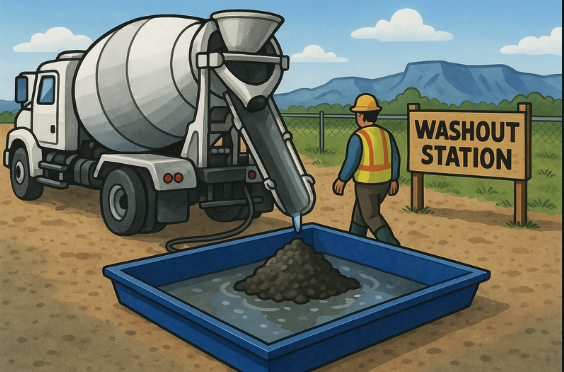WASH OUT
 |
|||

As with most cement-making equipment, early cleaning after a pour saves a lot of work. Washing Out a Ready Mix Truck is an essential part of the process.
This prevents Hardened Concrete from building up inside the drum. Which can cause damage by reducing the drum’s effective capacity and can interfere with future batches of concrete. Clean equipment also operates more efficiently and helps maintain consistent mix quality.
Another critical reason for washout is environmental compliance. Concrete wash water is extremely alkaline, with a high pH, and contains cement residue that can be harmful to soil, groundwater, and aquatic ecosystems. Proper washout procedures help companies comply with environmental laws.
The washout process usually begins at the job site. After the concrete is discharged, the driver performs an initial rinse of the chute and hopper using the truck’s onboard water system. Some water may be added to the drum, which is then rotated to help loosen leftover material.
Once the truck returns to the batch plant, a more thorough washout is performed. Water is added to the drum and it is rotated again to clean the interior. The slurry is discharged into a designated washout station, such as a pit or containment bin. The external components of the truck, including the chutes and rear end, are also rinsed.
Shining a light on over 80 Construction Categories, with unlimited potential for Sub Categories - Watch our Community grow!

